11 Great Japanese Cartoons for Japanese Learners of All Ages (Series and Movies!)
Do you think Japanese cartoons are just for children? Think again!
In Japan, cartoons are called “anime” (アニメ), which is short for the Japan-ized word for animation, (animeshon, アニメーション).
In English, “anime” refers to cartoons made in Japan or in the Japanese style. But in Japan, “anime” refers to any kind of animated cartoon. So the Japanese even call American cartoons “anime”, although they’re definitely not as popular as Japanese cartoons!
In the West, cartoons are usually produced for children. But in Japan, anime is not only for children. As we’ll see, some deal with very adult themes!
So if you’re learning Japanese, you’ll certainly want to watch some Japanese cartoons. Here are some of my recommendations for series and movies. Plus, at the end of this article, I’ll also tell you where to watch them and how you can use anime to help you learn Japanese – and how to avoid a big mistake learners might make!
Table of contents
- 8 Must-Watch Japanese Anime Series
- Doraemon – ドラえもん ( Doraemon )
- Sazae-san – サザエさん ( Sazae-san )
- Crayon Shin-chan – クレヨンしんちゃん ( Kureyon Shin-chan )
- Naruto – ナルト ( Naruto )
- One Piece – ワンピース ( Wan Pisu )
- Aggretsuko – アグレッシブ烈子 ( Aguresshibu Retsuko )
- Golden Kamuy – ゴールデンカムイ ( Goruden Kamui )
- Attack on Titan – 進撃の巨人 ( Shingeki no Kyojin )
- 3 Must-Watch Japanese Anime Movies
- My Neighbor Totoro – となりのトトロ ( Tonari no Totoro )
- Spirited Away – 千と千尋の神隠し ( Sen to Chihiro no Kamikakushi )
- Your Name. – 君の名は。( Kimi no Na wa. )
- Where to Watch Japanese Cartoons
- How to Study Japanese through Cartoons
- Note: Beware of Anime-Only Japanese!
- Find Your Favorite Japanese Cartoon
8 Must-Watch Japanese Anime Series
Anime series feature some of the most beloved Japanese cartoon characters! If you turn on a television or streaming service in Japan, you’ll find no shortage of anime series. Here are some great ones to get you started! (FYI, I’ll start with some of the most family-friendly shows first.)
Doraemon – ドラえもん (Doraemon)
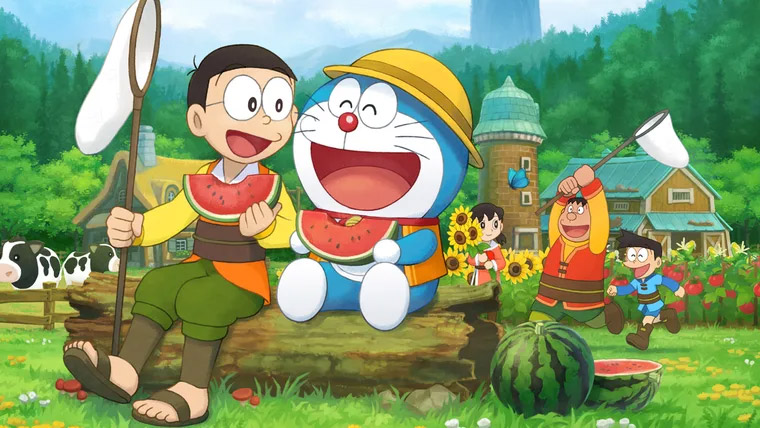
You can’t go to Japan without seeing images of Doraemon everywhere!
Doraemon, a blue robotic cat from the future, is a classic character in Japanese anime culture. He comes from the 22nd century to help a young boy named Nobita with his daily struggles. Doraemon has a magical pocket from which he can pull out a massive array of futuristic gadgets to help Nobita in solving problems, doing homework, and thwarting bullies.
Through their adventures, Doraemon teaches Nobita valuable lessons about friendship, courage, and perseverance. The show often ends on a humorous note, frequently due to the unintended consequences of using Doraemon’s gadgets!
Sazae-san – サザエさん (Sazae-san)

“Sazae-san” is an iconic staple of Japanese television. Actually, this is an understatement – it’s the longest-running animated series in the world!
This show chronicles the everyday life of Sazae Fuguta, a cheerful and energetic woman, as she navigates postwar Japanese society. It offers a glance into the life of a traditional Japanese household where Sazae lives with her husband, son, daughter, her parents, and her younger brother. (Phew! What a household.)
The plot revolves around the family’s simple domestic adventures, capturing the essence of the everyday highs and lows of family life. From dealing with nosy neighbors to addressing generational conflicts and the various challenges of raising children, “Sazae-san” offers a slice-of-life experience with heartwarming humor and relatable situations.
The show’s longevity and popularity are a testament to its ability to adapt to changing times while maintaining the core values of family and community.
Crayon Shin-chan – クレヨンしんちゃん (Kureyon Shin-chan)
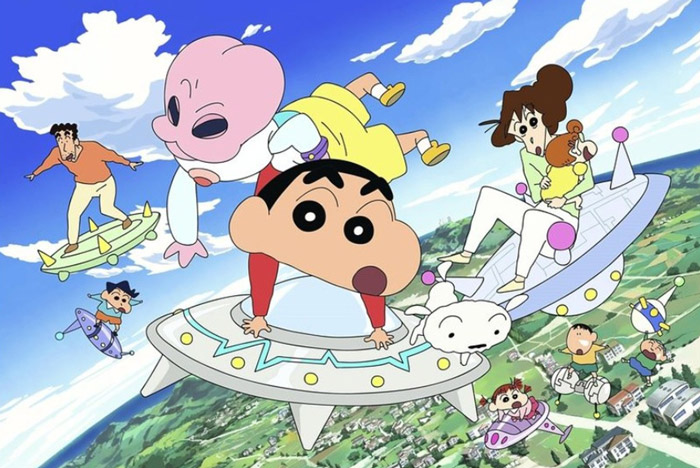
“Crayon Shin-chan” is another long-standing success. This show follows the antics of Shin, a mischievous five-year-old boy with a penchant for irreverence and causing trouble. Living with his parents, baby sister, and dog in suburbia, Shin’s actions often result in hilarious, awkward, and sometimes risqué situations.
“Crayon Shin-chan” is known for its satirical take on Japanese culture, adult humor (despite its child protagonist), and a candid portrayal of family dynamics and childhood. (Frankly, you’ll see a lot of mooning, so many Japanese parents are reluctant to let their young children watch it!) But the show balances its edgy humor with moments of warmth and family values, making it a longstanding favorite across generations.
Naruto – ナルト (Naruto)
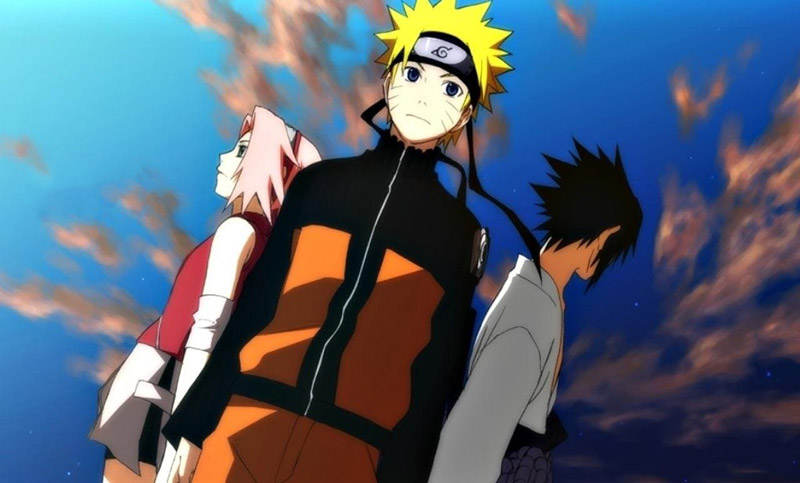
“Naruto” is a fascinating anime series that centers on the journey of Naruto Uzumaki, a young, boisterous ninja with a dream to become the strongest leader in his village. The catch? Naruto isn’t your typical ninja hopeful — he is the host of the Nine-Tails Fox, a powerful creature that once attacked his village, causing the villagers to treat him with suspicion and fear.
The series, rich with ninja action, adventure, and Japanese folklore, follows Naruto as he trains at the Ninja Academy, forms bonds with his teammates, and learns from his wise mentor. Throughout his quest, he confronts challenges that teach him about the value of friendship, perseverance, and self-discovery.
“Naruto” is a story of underdog determination and growth, intertwining epic battle scenes with heartfelt moments. The anime is beloved for its complex characters, intricate world-building, and themes of acceptance and striving to improve oneself.
One Piece – ワンピース (Wan Pisu)
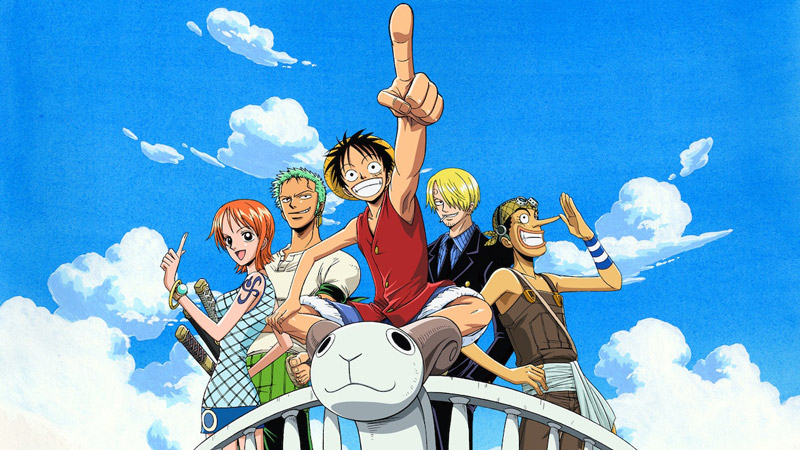
“One Piece” chronicles the adventures of the young pirate Monkey D. Luffy on his quest for the legendary One Piece treasure in order to become the next Pirate King. Along with his diverse crew, the Straw Hat Pirates, Luffy sails through treacherous waters, encountering other pirates, the strong-willed Navy, and various other friends and foes. Oh, and did I mention Luffy has a body made of rubber?
Through each adventure, the crew members explore their pasts, develop strong bonds, and confront personal aspirations while navigating the dangers of a world ruled by the World Government and other pirate factions. With over 1,000 episodes, be careful to take breaks in between binges!
Aggretsuko – アグレッシブ烈子 (Aguresshibu Retsuko)
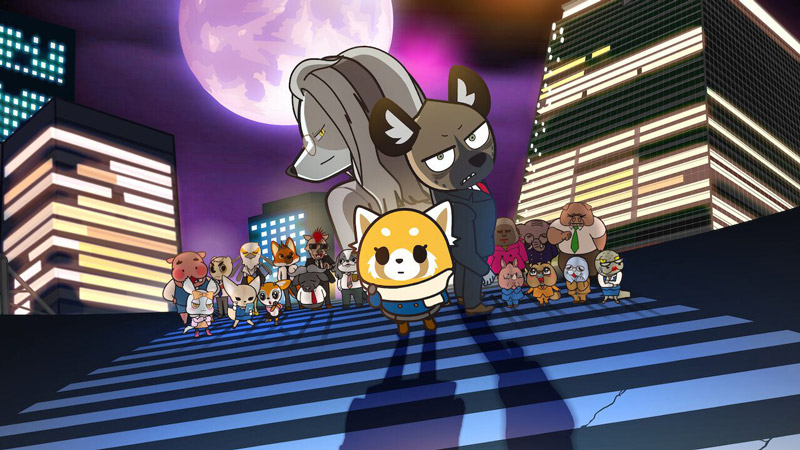
Next up, we have a few Japanese adult cartoons. “Aggretsuko” (short for “Aggressive Retsuko”) is a Netflix series made by Sanrio – you know, the creators of Hello Kitty. It revolves around Retsuko, a twenty-something anthropomorphic red panda, as she tackles the daily grind of her often frustrating job as an office worker in a Japanese company.
To cope with her stressful work life and the societal pressures that come with being a single woman in Tokyo, Retsuko has a unique (though secret) outlet: she vents her frustrations through passionate death metal karaoke sessions after hours.
“Aggretsuko” deftly combines humor and heart to comment on the challenges of modern Japanese work culture, the struggles of young adulthood, and the pursuit of personal happiness.
Golden Kamuy – ゴールデンカムイ (Goruden Kamui)
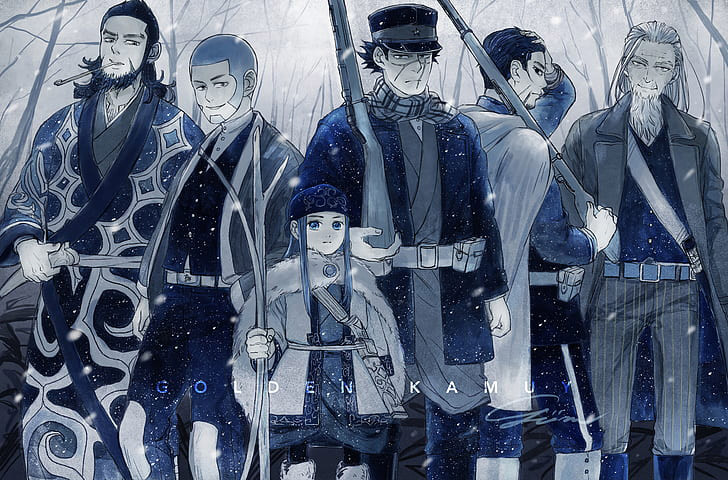
Have you heard of the Ainu, an indigenous group in Japan? Here’s a great opportunity to learn more about their culture and historical context through a gripping anime!
“Golden Kamuy” is an action-packed anime set in the post-Russo-Japanese War era of early 20th century Hokkaido. The story follows Saichi Sugimoto, a battle-hardened veteran, as he seeks to unearth a stash of hidden Ainu gold to fulfill a promise made to his fallen comrade.
After discovering a cryptic map tattooed on the bodies of escaped prisoners, Sugimoto joins forces with a young Ainu girl named Asirpa. Asirpa is not only skilled in survival but is also deeply knowledgeable about her indigenous culture. She has personal stakes in the hunt, seeking to reclaim her people’s stolen wealth.
Together, they embark on a dangerous quest through the wilderness of Hokkaido, confronting not just the harsh elements, but also other treasure hunters, criminals, and the persistent Japanese military. Created in consultation with the Ainu people, “Golden Kamuy” is a tale of survival that provides an insightful exploration of the Ainu culture, featuring a rich cast of characters and a mix of humor, brutality, and historical intrigue.
Attack on Titan – 進撃の巨人 (Shingeki no Kyojin)
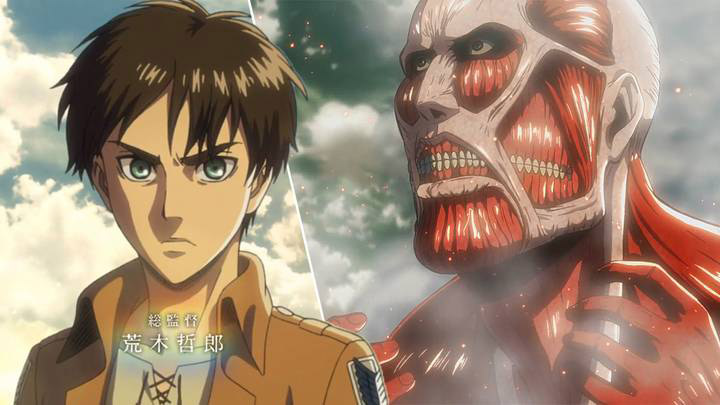
“Attack on Titan” is a dark fantasy anime that has captured the imagination of viewers worldwide. The story is set in a world where humanity resides within enormous walled cities to protect themselves from the Titans, gigantic humanoid creatures who devour humans seemingly without reason. The narrative follows Eren Yeager, his adoptive sister Mikasa Ackerman, and their friend Armin Arlert.
After a Titan destroys his town and eats his mother, Eren vows to join the Scout Regiment to fight back against the Titans. Driven by a burning desire for revenge and the hope of freedom, Eren, Mikasa, and Armin face the horrors of the world beyond their walls, as well as the dark secrets of their society and the true nature of the Titans.
“Attack on Titan” is lauded for its intense action sequences, complex characters, moral dilemmas, and intricate plot laden with political intrigue, shocking twists, and revelations about the Titans’ origins. It stands out for questioning the cycles of violence and the consequences of vengeance in a grim, unforgiving world.
3 Must-Watch Japanese Anime Movies
Of course, not all Japanese cartoons are series! There’s also a rich culture of anime movies. Here are some of the most notable ones to get you started.
And if you’re craving more, definitely look into Studio Ghibli films – they’re basically the Disney of Japan! Many of the anime series listed above also have movie spinoffs.

You can see Totoro peeking out from the Ghibli Museum in Mitaka, near Tokyo!
My Neighbor Totoro – となりのトトロ (Tonari no Totoro)
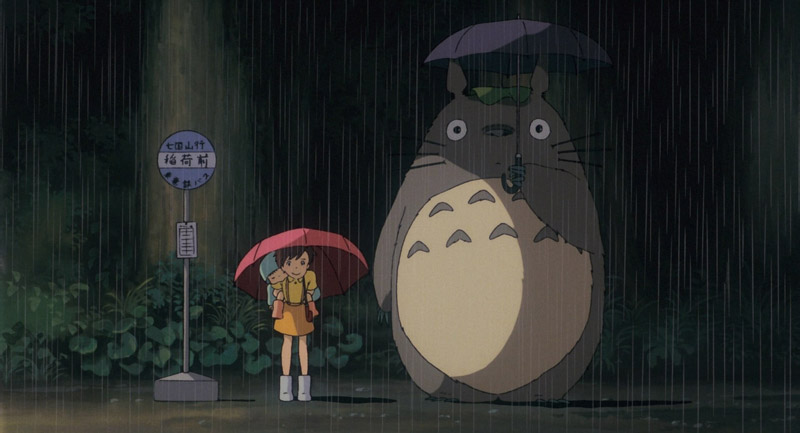
“My Neighbor Totoro” is a cherished Studio Ghibli film that tugs at the heartstrings with its portrayal of childhood innocence and the magic of nature. The story unfolds through the eyes of two young sisters, Satsuki and Mei, as they move to the countryside with their father to be closer to their hospitalized mother.
Exploring their new rural surroundings, Mei stumbles upon a forest spirit named Totoro, a gentle and whimsical creature that embodies the beauty and mystery of the natural world. But weird – adults can’t see him!
Appropriate for all ages, “My Neighbor Totoro” is a heartwarming tale that celebrates family, friendship, the wonders of nature, and the imagination of children.

I also saw Satsuki and Mei’s house in Nagakute-shi, near Nagoya!
Spirited Away – 千と千尋の神隠し (Sen to Chihiro no Kamikakushi)
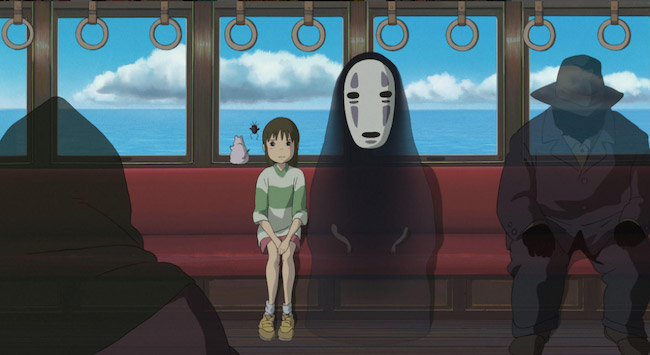
“Spirited Away” was more than a success – this international award-winning movie was actually the highest grossing film in Japanese history! (Its title was only usurped in 2020 by the “Demon Slayer” movie.)
Another Studio Ghibli film, “Spirited Away” follows the story of a young girl named Chihiro. When her family stumbles upon a seemingly abandoned amusement park on their way to a new home, her parents are transformed into pigs by a mysterious curse after carelessly indulging in food meant for the gods.
As another consequence, Chihiro finds herself stranded and forced to work in a luxurious bathhouse for the gods, owned by the witch Yubaba. To rescue her parents and return to the human world, Chihiro must navigate this complex spirit world, where she encounters a host of unique and captivating characters.
Rich in Japanese folklore, “Spirited Away” features gorgeous animation and themes of environmentalism, greed, and the resilience of the human spirit.
Your Name. – 君の名は。 (Kimi no Na wa.)
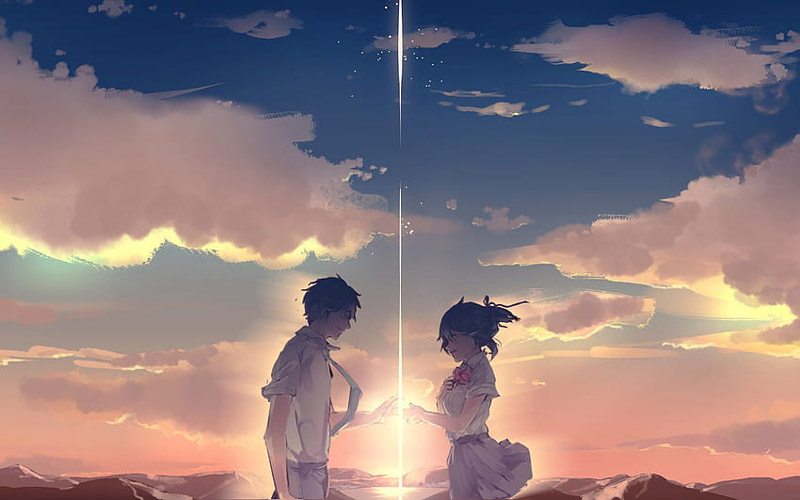
“Your Name.” only trails behind “Spirited Away” in terms of box office success! Inspired by Japan’s frequent natural disasters, “Your Name.” is visually stunning and emotionally charged. The story follows two high school students: Mitsuha, a girl living in the rural town of Itomori, and Taki, a boy residing in bustling Tokyo.
The two inexplicably begin to switch bodies, waking up in each other’s lives with no knowledge of how or why this is happening. Although they never meet, they find ways to communicate and become close. But suddenly, the body-swapping stops. Taki then goes on a quest to find Mitsuha, uncovering a deeper, fateful connection tied to a celestial event.
“Your Name.” is a poignant tale about connection, memory, and the lengths one will go to reunite with someone they’ve come to cherish deeply.
Where to Watch Japanese Cartoons
Now you might be wondering, “Where can I find Japanese cartoons?”
Nowadays, you have so many ways to watch Japanese anime! I remember when I was a teenager studying Japanese, the only option I knew of was Cartoon Network, and they were all dubbed in English! Of course, some television stations still have anime, but the best ways to watch are on streaming platforms.
Why? Because you can usually watch them in the Japanese original with subtitles in the language of your choice! Listening to the original Japanese is a great way for you to learn the language in a fun and engaging way.
Some of the best ways to stream anime include:
- Crunchyroll: Crunchyroll probably has the largest library of anime and is great for serious lovers of anime. It categorizes anime into different genres so you can easily find a cartoon that fits your tastes.
Of course, there are other anime-specific and mainstream streaming sites out there, but these have some of the widest options globally and have strong reputations.
How to Study Japanese through Cartoons
Okay, so you’ve found a Japanese cartoon you want to watch. How can you optimize this for learning Japanese?
Now, let me say there’s nothing wrong with watching Japanese anime in English. You can still probably pick up some cultural tidbits. But the best way to learn Japanese through anime is by using a more active approach. I recommend this:
- First, watch the anime with Japanese audio without English subtitles. Especially if you are just starting out, this doesn’t need to be an entire movie or episode. It can be just one scene or clip if you’d like!
This method takes some active learning, but it’s a great way to build up and practice your Japanese vocabulary, grammar, and listening skills!
Note: Beware of Anime-Only Japanese!
Now, keep in mind: Sometimes the Japanese you’ll come across in anime is not used in real life. Characters might speak in odd ways or even makeup words! This is all part of the world-building aspect of anime. (If you played certain Japanese video games, like Animal Crossing, you’ll see these used even in the English translations!)
For example, characters might make up their own gobi (語尾), or sentence-ending particles (think yo / よ or wa / わ). In Chibi Maruko-chan, the pig-like character Butaro often ends sentences with bu (ブー), which is the sound a pig makes!
Another thing to watch out for is grammar. Especially in action-heavy anime, male characters in particular tend to talk in quite a rough way. They often use the imperative form, which is often incredibly rude to use in real-life Japanese and should be used with caution. For example, they often use kurae (くらえ) in a battle when using a special move. In reality, this a very vulgar phrase that literally means “eat it,” and… well, there really aren’t any opportunities to use this in real life anyways! (But I guess if you have a unique battle move of your own, good on you. Might as well use it then.)
Find Your Favorite Japanese Cartoon
So what is Japan’s best anime? I’ll let you decide.
Want some more recommendations, tips, and tricks? Check out our article about learning Japanese through anime!
Whether you like heartfelt, family-friendly shows or fascinating movies rich with social commentary, there’s a Japanese cartoon for everyone!
Of course, this is just a starting point. So go out there, find your favorites, and watch your Japanese understanding skyrocket!

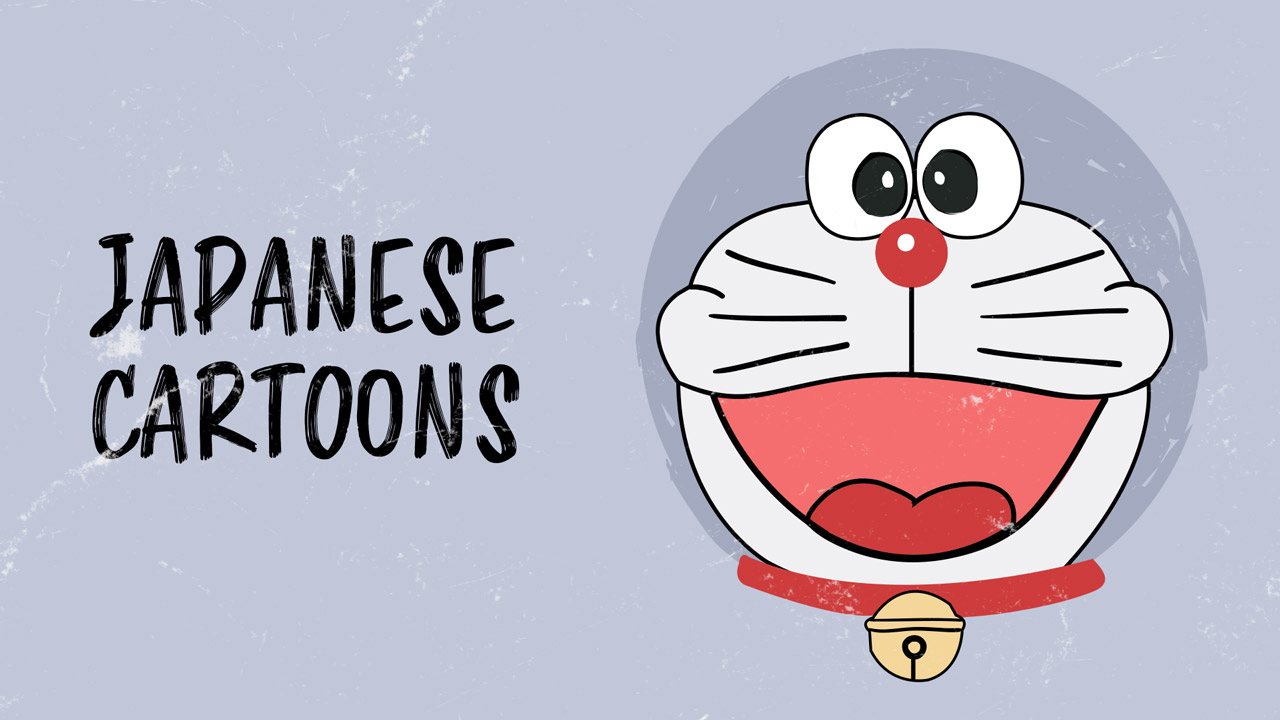

Social